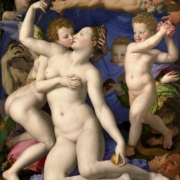Introduction, Bion and Foulkes
Introducing the present issue of Funzione Gamma devoted to”Bion and Foulkes” I would like to thank all the contributors as well as those who took part in preparing it. Going through the several papers I need first of all to emphasize how .meaningful and enriching (in the sense of future developments)the sources of psychoanalytic thinking about the group are, how fascinating it is to inquire about their similarities and differences, how necessary to reread them looking for new integrations and proximities. The topic looks more and more stimulating as we feel the pressures implied by the changes in the rapid development of the social group’s organization and the urgency to compare different epistemological models that permit to work through different approaches to our object.the group. Particularly important the connection to the classical psychoanalytic theory and its development (institutional as well): connection which implies autonomy and distance at the same time, to keep the dialogue with other disciplines alive. If the group’s life and the valuing of the social potentialities of the individual mind are the focus of our attention and research, then the meeting of different minds, on this telematic occasion, represents itself a comunicative space, where group elements come together in a new meaningful and transformative dimension. So the meeting between Bion and Foulkes, historically unsatisfacory, achieves a sort of “mythological Read more

